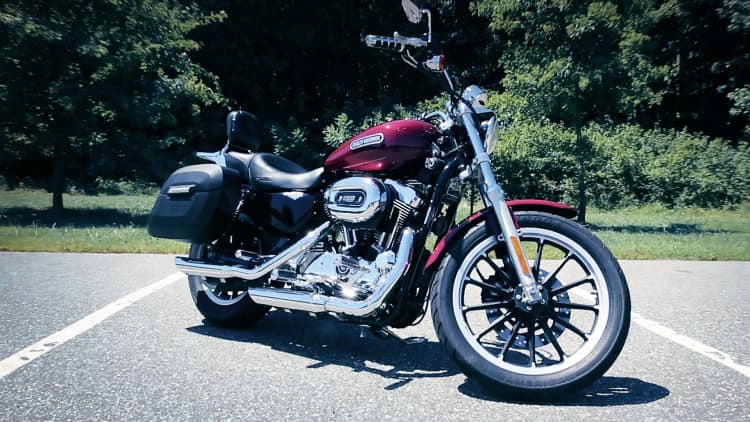
Harley-Davidson has been in the vortex of President Donald Trump's trade war policies over the past quarter. But now its stock is up nearly 7% – on track for its best day since October 18, 2016. The company, though, isn’t out of the woods. Its sales have been falling since 2016, it was hit with tariffs, and went from being praised by Trump to scorned. CFO John Olin said that tariffs will cost the company $45-55 million this year.
A large part of that comes from the recent EU tariffs that sparked its controversy with the president. But a few decades ago, tariffs actually helped Harley from going under.
In the late 1970s, Harley-Davidson was in deep trouble. Its bikes had dropped in quality and the motorcycle industry in America was being taken over by Japanese brands. Its share of the U.S. heavy bike market had dropped from 75 percent in the early 70s to just 25 percent in the early 80s.
The situation was so dire that a group of Harley executives, led by CEO Vaughn Beals, bought out the company from then-owner AMF in 1981. They launched an ambitious strategy to turn the company around. They shrunk the workforce, improved quality and then they reached out to the International Trade Commission for help with foreign competition.
In 1983, President Ronald Reagan raised tariffs by 45 percent on large motorcycles coming into America. It would help slow the progress of Japanese bike makers. Speaking at Harley’s facility in York, Pennsylvania in 1987, Reagan stated, “It was like giving a boxer a few extra weeks of training before a fight.”
Harley-Davidson would go on to make a historic comeback. In 1987, it was on the NYSE and by 1989 it reclaimed nearly a 50 percent share of the heavy bike market.
While those older tariffs helped Harley to survive these newer ones are likely to harm it.
As of 2014, Harley-Davidson had a 35 percent share of the U.S. market, which is more than any other motorcycle manufacturer. Its sales, though, have slipped. Harley’s worldwide sales dropped from more than 260,000 in 2016 to under 243,000 in 2017. In that same year, Honda sold more than 17.6 million — and that marked a rise from the year before.
Harley may have the biggest share at home, but abroad they're outsold by millions. The EU tariffs would have put more pressure on Harley. They would have either had to pass along the costs, making its already pricey motorcycles even more expensive compared with the competition, or the company would have to absorb the costs itself, hurting its profit margins.
To ward against that, Harley has talked about evading the tariffs by shifting more manufacturing outside the U.S. — a decision that angered Trump. He tweeted that his administration would now work with other motorcycle companies who want to move into the U.S.
In the 80s, Harley was once again an independent company and on the rise, with then-president on its side. Its rally cry to celebrate the move was “The Eagle Soars Alone.” Today, it may not be in celebration but it feels just as fitting.

